Amsterdam is museum central
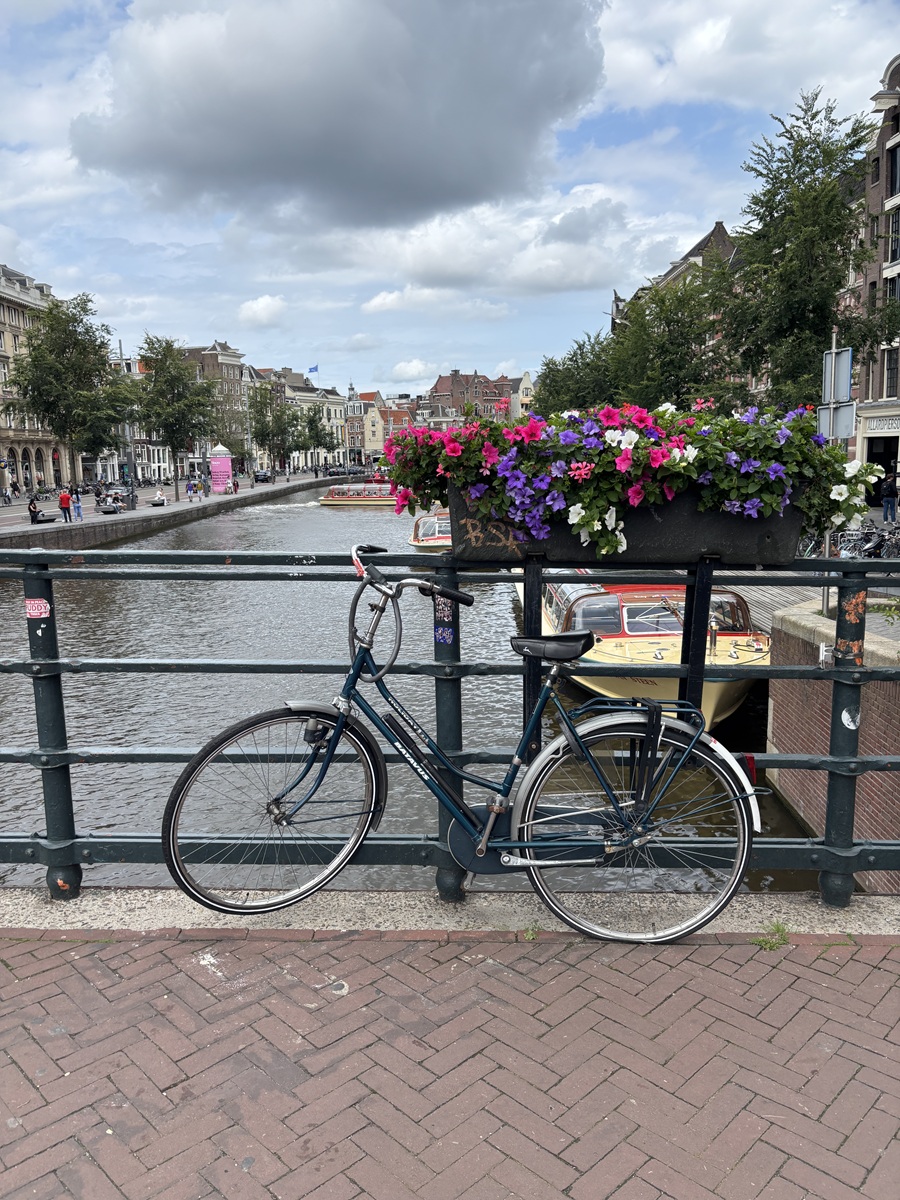
From Rembrandt’s house to the Resistance Museum – not time enough!
By Eileen Ogintz
Ready for breakfast—and time travel? We are back in 17th Century Amsterdam, in Rembrandt’s time in his house, in his kitchen with its big open fireplace, short bed where the maid slept (people believed it was healthier to sleep sitting up, rudimentary outhouse in the courtyard.
We are imagining bread baking, herring and plenty of beer – for the kids too, we learn from the interactive audio tour narrated by Rembrandt’s dog Kwast (which means Brush in Dutch). “Rembrandt’s little joke,” Kwast says. Beer, Kwast explains, was healthier to drink than water in those days. At least Rembrandt’s house had a tap. Most people had to fetch water from the canals.
We are following the family audio tour as we make our way up the steep staircases from the kitchen to salon, studios, sketching room, his “museum” with artifacts he’d bought from traders coming to Amsterdam (check out the stuffed crocodile hanging from the ceiling! Many of his original etchings, his studio and classroom where he taught students.
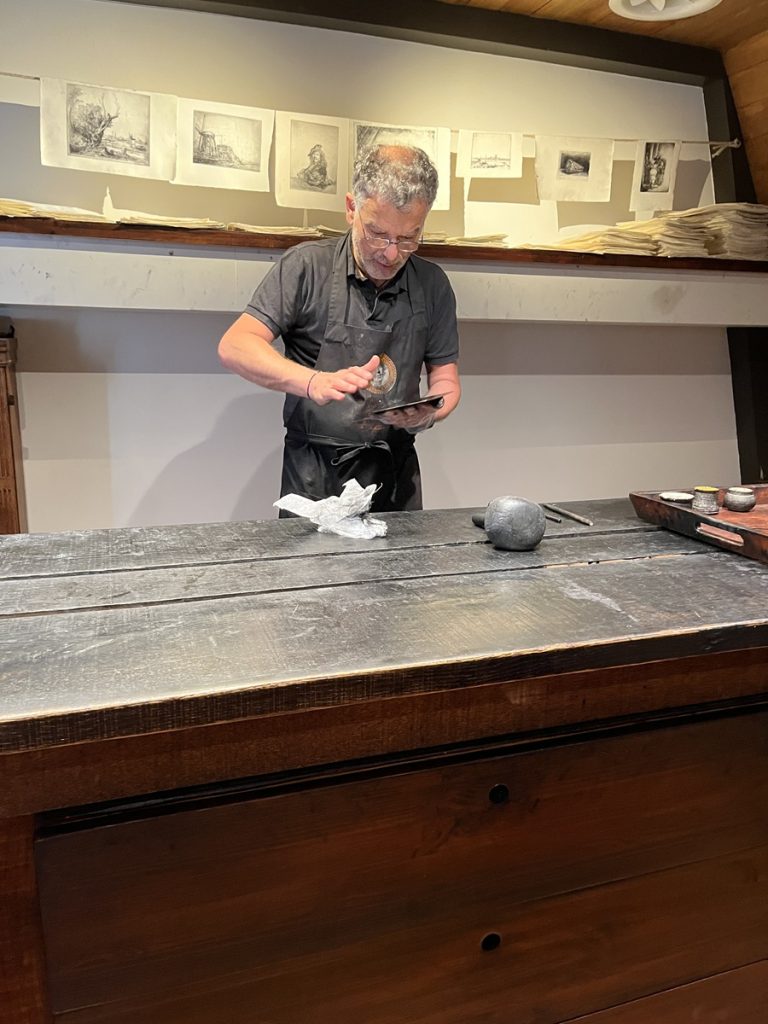
This was more than a family house. It was a workshop, a place to meet customers and sell art, to get portraits commissioned and a place where aspiring artists were taught.
We follow Rembrandt’s life from his arrival as a celebrity artist to his forced departure 19 years later when he was deeply in debt.
We see the book that was the inventory of all of the possessions that were sold in 1658, enabling historians and the curators to recreate Rembrandt and his family life.
This is a great bet for families from the steep creaky staircases to etching and painting demonstrations to see how Rembrandt made his art. (He ground bright red lice for one color, storing them in pigs’ bladders!) During the summer there are family workshops to mix paint on the paint stone and make your own etchings.
We are spending a few days exploring Amsterdam staying at the Hilton Amsterdam (a great bet for families!) before embarking on an AmaWaterways river cruise.
Amsterdam, of course, is known for its canals, cyclists, and museums (If you plan to see many consider the IAMsterdam card which gives you admission to some 70 museums and sites, including the Rembrandt House Museum and the Rijksmuseum.
I loved that at the Rembrandt House, the interactive audio tour allowed me to switch from the family tour to the adult tour; Kwast’s narration would make kids laugh and offered “quests” seeing if they could find things in each space, like the pan in the kitchen to make the round Oliebol, sweet fried dough that are popular here and that Rembrandt loved, Kwast tells us.
The much loved Kwast proves an able guide, proudly telling us how Rembrandt sketched him many times and that he is front and center in Rembrandt’s masterpiece , “The Night Watch, the huge group portrait of a company of civic guardsmen on display in Amsterdam at the Rijksmuseum (www.rijksmuseum.nl) This was his crowning achievement, painted in 1642 and a turning point in his career.
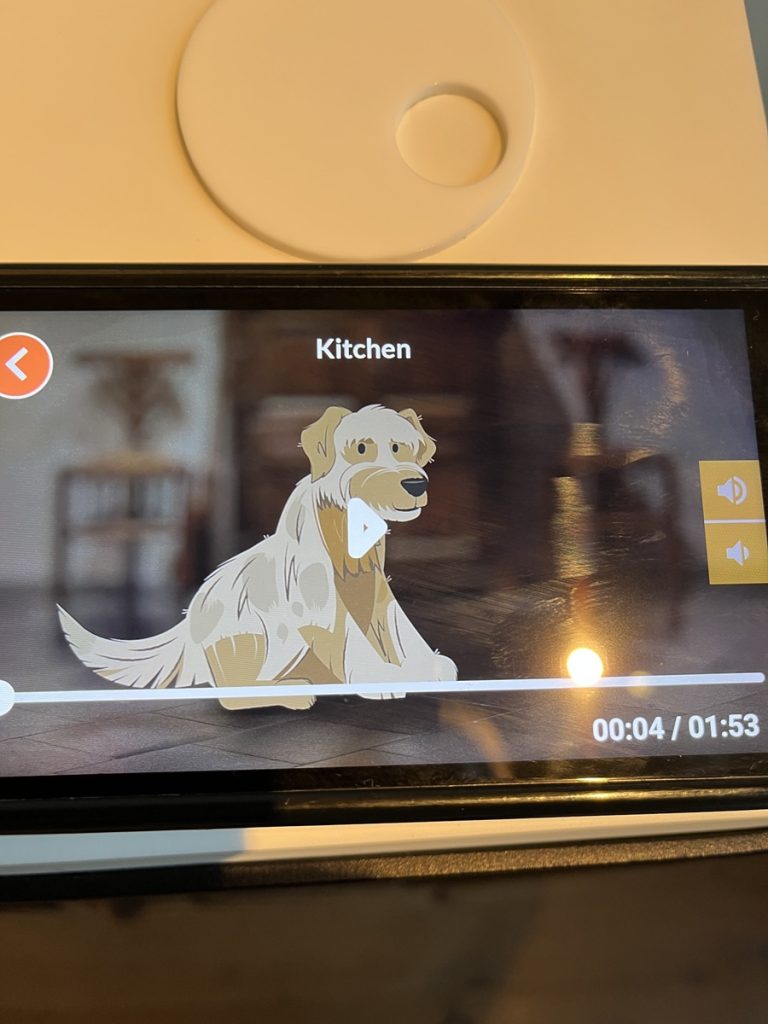
As you move from room to room, brush your hand over the multimedia screen to see what Rembrandt would have seen in particular rooms. Kwast darts across the screen, engaging kids.
We learn he had a son Titus who would serve as his dealer and after his wife Saskia’s death, his relationships with maids, including Hendrickje with whom he had a daughter Cornelia. Sadly, he had to sell the portrait of his wife and Hendrickje, with whom he lived with for decades, was also the subject of several paintings and drawings.
In the classroom, set up with workstations where students might look in the mirror to draw a self-portrait, copy a painting or draw the statue of a boy’s head, we are asked what we would want to do. These were advanced art students who paid hefty fees to work with the Master as there were no art schools in those days. “They came to learn the tricks of the trade,” Kwast says.
Today of course Rembrandt is considered one of the greatest artists ever with his use of light, his ability to make his subjects seem real and to show emotion But toward the end of his life, his work had gone out of favor and that coupled with bad financial management left him so in debt he had to leave his comfortable home for smaller digs. So sad!
His mistress Hendrickje died of plague and his son Titus also died young, just 26. Cornelia was orphaned when she was 14 but later married and moved to the East Indies. Rembrandt continued to paint until his death.
You can walk in Rembrandt’s steps through his neighborhood thanks to the museum’s partnership with Mastercard. All you need is a smartphone and follow the route with wandelenmetrerembrandt.nl.
The Rijksmuseum, meanwhile, is the largest in Amsterdam, both in the size of the collection (over a million artworks and historic objects, including masterpieces by Rembrandt and Vermeer, attracting some 2,7 million visitors a year.
With 800 years of Dutch art and history it can be overwhelming. I love the museum’s Family Trail, suggesting the museum “is like a big castle full of hidden corners, stairs and countless artworks.”
Kids are encouraged to, for example, walk until “you find a gallery with paintings of people.” Choose a portrait of someone poorly dressed and then consider how you could improve their looks. Perhaps a different hairstyle?
Another card asks that we choose a gallery where visitors are chatting—and a painting with a few people or animals. What kind of conversation are they having? Take turns thinking about what one of the figures might say.
Look for an artwork where a person is striking a pose… and copy the pose. Who in the family can hold it the longest? Spot an artwork with a tree… which one would you live in? There are 11 different cards on this quest and it’s great in this museum that they can be achieved in many of the galleries (and similar quests would work of course in other great museums.)
There is also a Digital Family Quest for families to play together seeking the password as they meet challenges in different galleries.
The password—Rembrandt, of course.
We get a much more sobering trip time traveling back to the Netherlands during WWII and the Nazi Occupation at the Dutch Resistance Museum.
Individual stories are told about Nazi officers, those in the resistance, Jews who were deported, those in hiding (including thousands of young men who went into hiding rather than face being sent to Germany to work as virtually slave labor) those who regretted following Nazi orders like policemen, and harrowing remembrances about “the hunger winter” when 20,000 people died of starvation in the winter of 1944.
It is an intense experience but yes, you can bring kids here—especially older grade schoolers and middle schoolers, as the wire is an entire Junior Museum which tells the story of the occupation through the remembrances of kids. I love that there are different experiences recalled—one girl who is proud of her dad because he supports the Nazis and sells the Nazi Party’s weekly newspaper. She hopes to be a leader in her Youth Storm Group but is upset because some of her classmates call her a “dirty Nazi.”
On the other hand, a girl named Eva whose family moved from Austria said she had been called “a dirty Jew” and finds her pleasant Amsterdam life more and more limited as she is banned from riding her bike, going to the movies or the zoo and much, much more. She and her family ultimately go into hiding separately from her father and older brother and Eva is very bored. Ultimately, they are betrayed and are sent to Auschwitz.
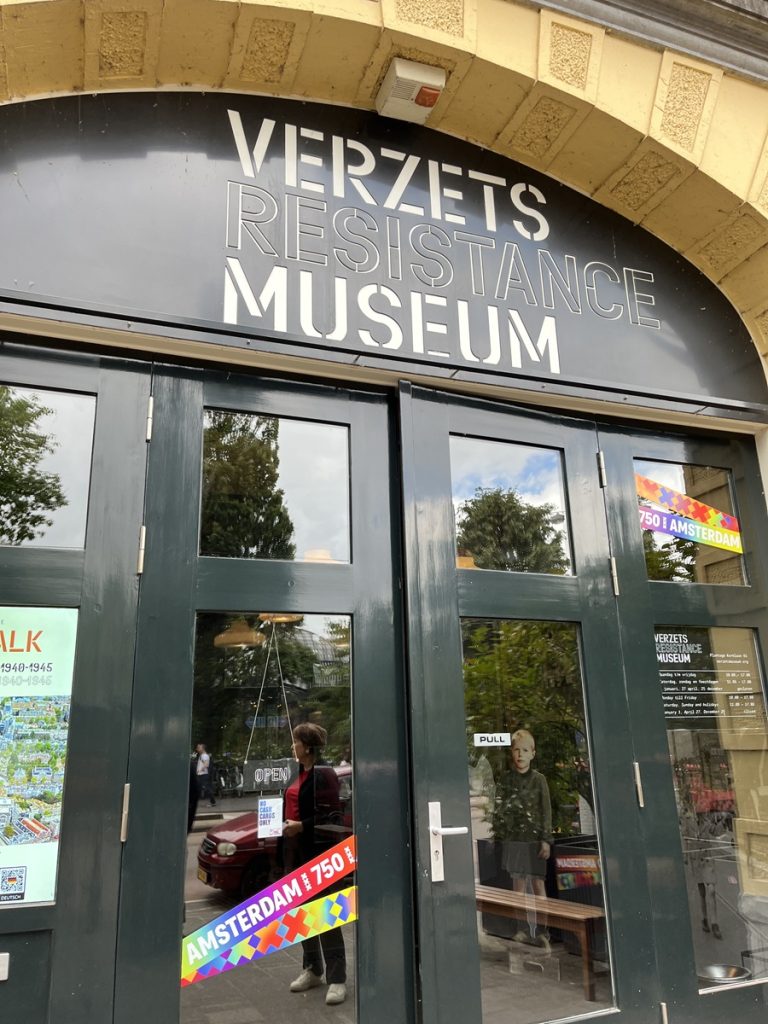
Jan, who is just seven years old, is proud that his dad helps people like Eva’s family or allied airmen. His father, a minister, hides just ahead of the Germans coming to arrest him and young Jan has to go live with another family. Though the captions are in Dutch, the audio tour enables us to hear these stories in English, and a booklet encourages the kids to get engaged as they go through the exhibit as they answer questions.
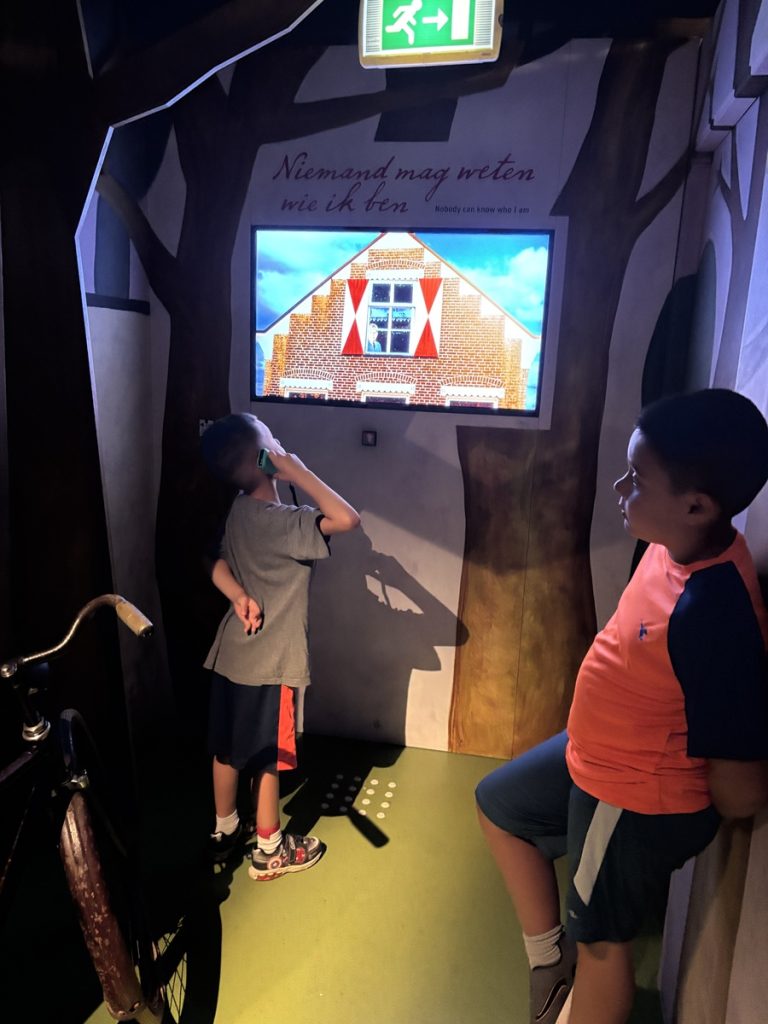
Why did Henk’s brothers go into hiding? (To avoid being sent to Germany to work?) What happens to people who lived near the coast as did Henk’s family? (The Germans were building defenses?)
Where do Eva and her mother hide during a raid? How do you feel about Eva’s story? (scared, sad, angry…?)
Though Jan is proud of his dad, why is he also scared? Do you understand why Nelly’s friends don’t want to hang out with her? What happened to them after liberation?
There are drawers to open, small doors to walk through, radio, knobs to turn, school desks to sit in and much more…certainly a way for kids to empathize with kids who lived through terribly troubled times and hopefully to relate to kids living through troubled times today.
Well done!
